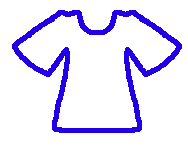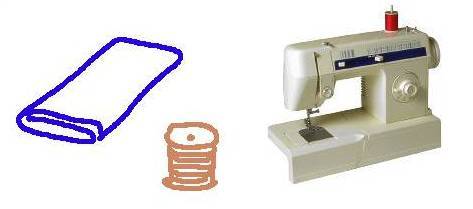General accounting
IV. 15. Posting the journal of a complete cycle (part 1)
Video
Introduction. In the past lessons we learned to post one transaction into two accounts. In this lesson we shall post all the transactions of an accounting cycle, and see how the accounts of the ledger get filled. (We shall distinguish cash, and money at the bank in a checking account.)
Mini accounting software. Accompanying this lesson is a spreadsheet called mini_accounting.xls showing all the transactions and the mechanics of their posting. It can be viewed as some rudimentary accounting software. You can changed the figures, but not the transactions themselves. The spreadsheet computes the so-called "Trial balance" at the end of the accounting cycle (= the list of accounts balances).
It even presents some proto Income Statement and Balance Sheet, but these IS and BS are not the real final ones, because they are computed before year-end adjustments. They are only here to prepare our understanding of the year-end adjustements which we shall study in a forthcoming lesson.
A shop. Once again, for the sake of simplicity, we consider a shop which buys goods, records them following the traditional accounting method in a "Purchases account", and sells them without any physical transformation.
To illustrate the difference, let's view a shop which buys and sells products without any transformation, and a manufacturer which buys pieces of cloth and yarn; with a sewing machine, makes final products; and sells the final products.
Purchases and investments |
Products sold |
|
| Shop |  |
 |
| Manufacturer |  |
 |
Two prices. The goods handled by the shop have two prices:
- our buying price from a supplier of goods (a manufacturer, or a wholesaler) : it will be 40€ apiece. We will sell only one type of goods.
- our selling price to customers: it will be 100€ apiece.
- in this simple example, there is no VAT (value added tax) on top of our selling price.
A simplification of real life. In reality, over one accounting year, even a small firm makes thousands of transactions. We shall look at only 19, pretending they form a complete year. And we shall look at the first accounting cycle of the shop, when we start from a blank slate.
Let's also mention that this example is not an illustration of realistic good management. It is just an illustration of the mechanics of accounting and the evolution of accounts during the cycle.
Here is the journal of "Joe' business" over our (simplified) complete accounting cycle

Transaction 1: as usual the very first transaction of a firm is the receiving of initial capital, in exchange for receipts, called "shares of capital", given to the owners.
so let's post the transaction: Joe puts cash (10 000€) as initial capital into his firm's till
the cash account receives 10 000€, so is debited this amount

and the capital account which records the "shares" issued to the owners, is credited the same amount.

Transaction 2: Joe takes 8000€ of cash from the till to the bank (to put into the checking account of the shop).
We record in our accounting system this transaction, as usual into two accounts.
The cash account gets credited 8000€:

and the bank account is debited the same sum

It is important to understand that this "bank account" is only our record of the money we have at the bank.
Transaction 3: Joe's shop buys a delivery van on credit from Jules garage, 3000€
a van arrives into our assets

and we issue an IOU to Jules

Transaction 4: Joe's shop pays rent, one quarter in advance, 1000€ by cheque
What "comes" into the firm is the right to occupy premises for one quarter. It's gonna be consumed during the coming quarter.

and what leaves the firm is money from our bank account in payment of the rent

Transaction 5: we purchase goods on credit from a supplier named Deirdre.
We buy 100 items, at 40€ apiece.
What comes into the firm is 4000€ worth of goods (buying price). Following traditional accounting we simply record them into a "Purchases account". The actual computation of the inventories and the goods sold will take place during the so-called "year-end-adjustments" at the end of the accounting cycle.

and what leaves the firm is an IOU we send to Deirdre, promising to pay her 4000€ at a specified date in the future. Usually suppliers are paid between 15 days and 45 days later.

Instead of calling it "Suppliers account" or "Creditors account", we called it "Deirdre account". All this is up to us. But if this makes you feel more comfortable, it is the "Creditors account".
Transaction 6: we pay shop expenses 1500€ by cheque (to various suppliers)
Miscellaneous stuff corresponding to shop expenses come into the firm, and will be consumed soon (or are already consumed, like electricity)

and the bank account is credited the same amount

There again, pay attention to the fact that this is simply enough a page in our accounting system recording the money we have at the bank. After the cheque for the shop expenses we are left with 5500€ at the bank.
Transaction 7: a sale! We sell goods to Sally for 3000€. That is, we sell her 30 items (since our selling price is 100€ per item). We grant her credit, so we don't receive money, only an IOU from Sally.
An IOU comes into the firm. Remember, this is the origin of double-entry accounting: receiving value, which is not money but debtor's paper, in payment for something we sold or one way or another parted with. This makes it easy to remember the rule: value coming in is a debit in the appropriate account.

We called this account "Sally account". Of course, it is a part of the debtors account. But we may very well split the debtors account into several accounts for each client to whom we grant credit, and give them the names we like.
As for what leaves the firm, here we use the "Sales account". Remember that it is a special account designed to conveniently compute, later on, the profit (or loss) of the cycle. (The recording of the goods actually leaving the inventories will be taken care of during the year-end adjustments.)

Transaction 8: Joe's firm sends a cheque to Jules garage in settlement of what we owe it.
What leaves the firm is the money (by cheque)

(we check that we have the money to pay this check: indeed, before the cheque we have 5500€ at the bank; and after the payment we're still left with 2500€)
and what "comes into the firm" is the cancellation of the IOU we had given to Jules

Transaction 9: we receive partial payment from Sally, 2000€ in cash.
What comes into the firm is 2000€ of cash. It is a debit in the cash account

and what "leaves the firm" is 2000€ worth of IOU's we had in our assets and which is cancelled by the actual payment from Sally.

Transaction 10: we take Sally's cash to the bank.

Now we have 4500€ at the bank.
And the cash account is credited.

After this, we also have 2000€ in cash.
A pause. We treated 10 transactions so far:

Nine transactions remain to be treated. We shall do that in the next lesson.
A first glance at the inventory.
Since we are following the traditional accounting technique, during the accounting cycle we record all purchases into a "Purchases account".
We shall treat only at the end of the year the measurement of the value in inventory and the value (buying price) of goods actually sold during the cycle.
Nothing prevents us, however, from having a glance at the physical inventory in our assets, and its evolution:

Before transaction 5, we had nothing in inventory: no goods to sell, we have to buy them first! (We are not in the stockmarket, where it is possible to sell things we don't have...)
In transaction 5 we purchase 100 items (at 40€ apiece). Therefore our inventory becomes : 100 items.
Then, in transaction 7, we sell 30 items (at 100€ apiece). So at the end of transaction 7, our inventory now is 70 items.
The inventory will continue to evolve during the subsequent transactions, with purchases and sales. We shall see this in the next lesson. And we shall see how we treat "cost of goods sold" and inventories, in double-entry accounting, in the lesson on "year-end adjustments".
Exercises:
- Try to complete by yourself the posting of the last 9 transactions.
- Complete the tracking of the inventory.



